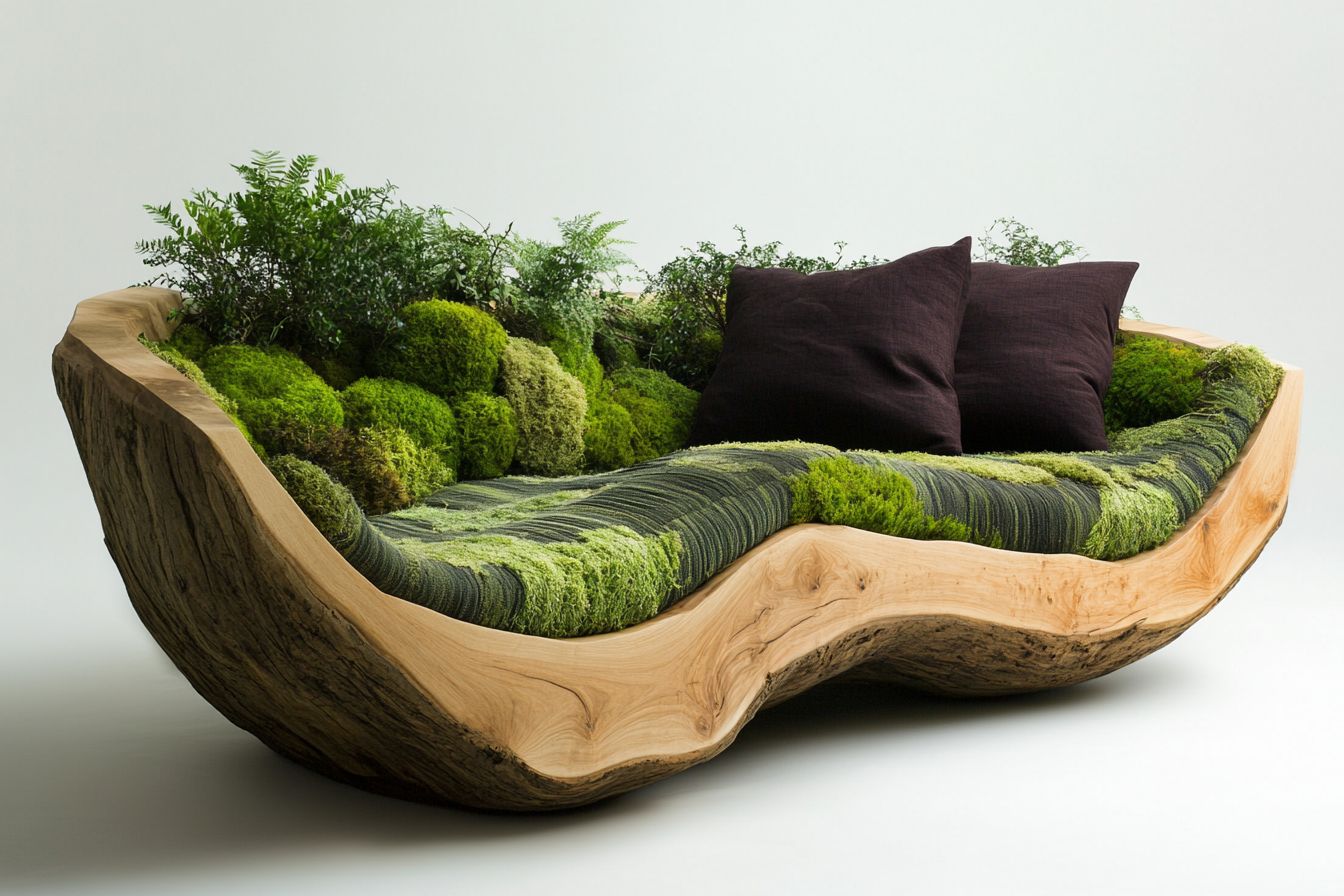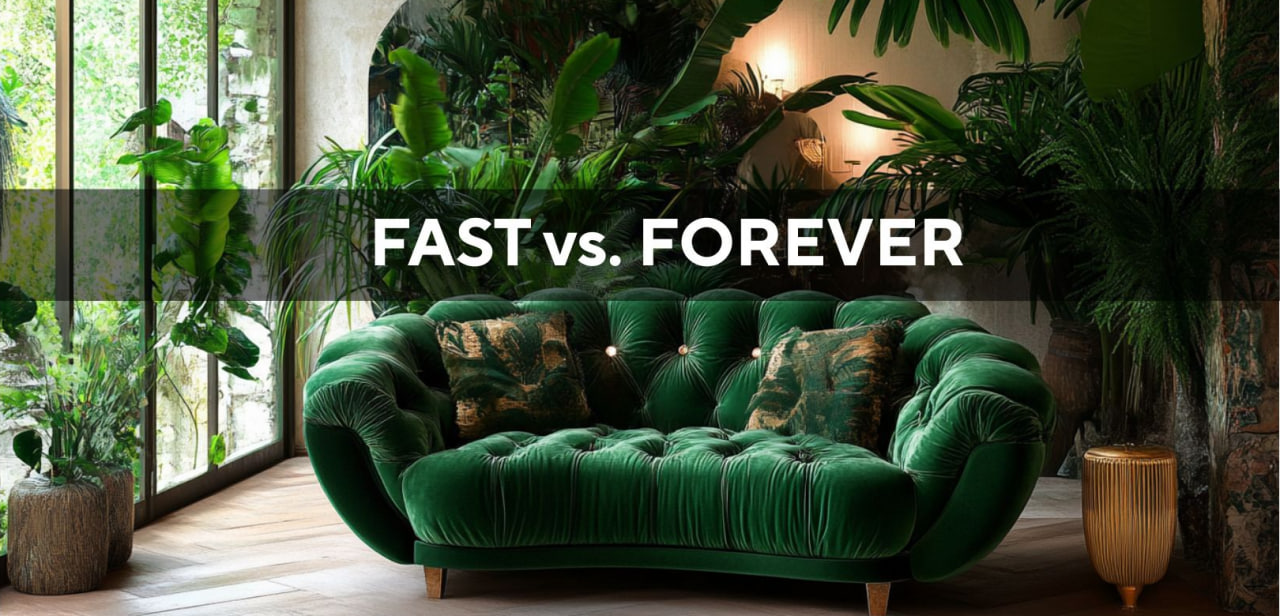Furniture, as well as clothes have different quality segments: mass market (e.g. Ikea), middle class ( e.g. Hay or Kave Home) and lux segment ( e.g. B&B Italia). As you may have noticed, today I will be writing about the luxury segment and explaining why it is a smart investment, just like investing in a Birkin bag by Hermès.
Environmental problems
Sustainable furniture has transformed from a niche market to a mainstream phenomena as consumers become increasingly aware of their environmental impact. More than just a passing trend, furniture sustainability combines responsible material sourcing, ethical manufacturing, and unique design that make product timeless.

Nowadays, the furniture industry faces “fast fashion” epoch. What was once considered a lifetime purchase has become increasingly accessible, with cheaper materials and trend-driven designs provoking frequent replacement cycles. It was indicated that furniture quality has decreased in recent decades, particularly in lower price segments. According to a 2024 report, this trend is partially explained by “a decrease in quality” and the fact that “interior design and thus furniture also seem to be increasingly subject to trends”. The shift from solid wood and metal (durable materials) to cheaper alternatives like plywood and particleboard has significantly reduced furniture durability and repairability (Lisanne S., et al., 2024). This phenomenon has negative environmental consequences. In North America alone, approximately 80% of furniture ends up in landfills at the end of its usable life, generating hundreds of millions of dollars in transportation and disposal costs annually. This furniture waste decomposition produces methane-a potent greenhouse gas-and toxic leachates that can contaminate soil and water supplies (Agati Furniture report). The environmental impact is compounded by the carbon footprint associated with each new piece manufactured, with the average furniture item generating 47 kilograms of carbon dioxide, equivalent to over 5 gallons of fuel (Rose Morrison, 2024). To say it shortly, when people purchase cheap furniture for daily base, it breaks sooner than expected and it need to be to replaced it with another.
What makes furniture truly sustainable?
Sustainable furniture goes beyond marketing buzzwords to improve responsible practices throughout its lifecycle. Here I show you elements that helps consumers make rational choices.

Sustainable furniture begins with responsibly sourced materials. Forest Stewardship Council (FSC) certified wood ensures minimal environmental impact while supporting biodiversity and reforestation (Walker S, 2025). Other sustainable materials include:
-
Bamboo and rattan, which regenerate quickly.
-
Reclaimed or salvaged wood that reduces the need for new logging.
-
Recycled metals and plastics that divert waste from landfills.
-
Organic fibers like cotton, linen, and hemp for upholstery.
Quality furniture designed to last for decades or even generations. Moreover these items are beyond “trends”, since their designs are timeless. It provides significant economic advantages:
-
Reduced replacement frequency = long-term savings.
-
Minimized repair costs over the lifetime of the piece.
-
Potential appreciation in value, particularly for well-crafted items.
High quality furniture production typically highlights resource efficiency:
-
-
Reduced raw material consumption through efficient design and manufacturing.
-
Lower energy consumption during production compared to multiple replacement pieces.
-
Extended product lifecycle keeping materials in use longer.
-
Regional sourcing with shorter transport routes reducing transportation CO2 emission.
-
Consumer Guidelines: identifying truly sustainable furniture

Now lets talk about key indicators of sustainable furniture.
When you search for sustainable furniture, look for these quality markers:
-
Material transparency and certifications (FSC, GREENGUARD, Sustainable Furnishings Council);
-
Manufacturing information including production location and labor practices (The good trade; Davidson);
-
Finish details specifying low-VOC or water-based options (Walker S, 2025; Agati Furniture report);
Questions to ask retailers:
-
How materials were harvested or manufactured (Davidson);
-
Manufacturing processes and environmental safeguards in production facilities (Walker S, 2025);
-
Packaging practices and delivery methods (Walker S, 2025);
-
End-of-life options for disassembly, recycling, or take-back programs (Lisanne S., et al., 2024).
So, next time you’re tempted by a trendy, low-cost chair, remember that true sustainability—and long-term style—comes from investing in quality pieces that are built to last. Luxury furniture isn’t just about the label; it’s about making a smart, eco-friendly choice that stands the test of time (and trends). I hope that by reading this post you became more environmental awarded.




great topic and the post, especially nowadays!!!
yess, thank you!
I completely agree with the idea that quality furniture is more than just an investment in aesthetics—it’s about sustainability and long-term value. When we consider the environmental cost of constantly replacing lower-quality furniture, investing in timeless, well-made pieces feels like a much more responsible choice.
I’m happy that you liked my idea
Well presented information, interesting to read and nice design
thx!